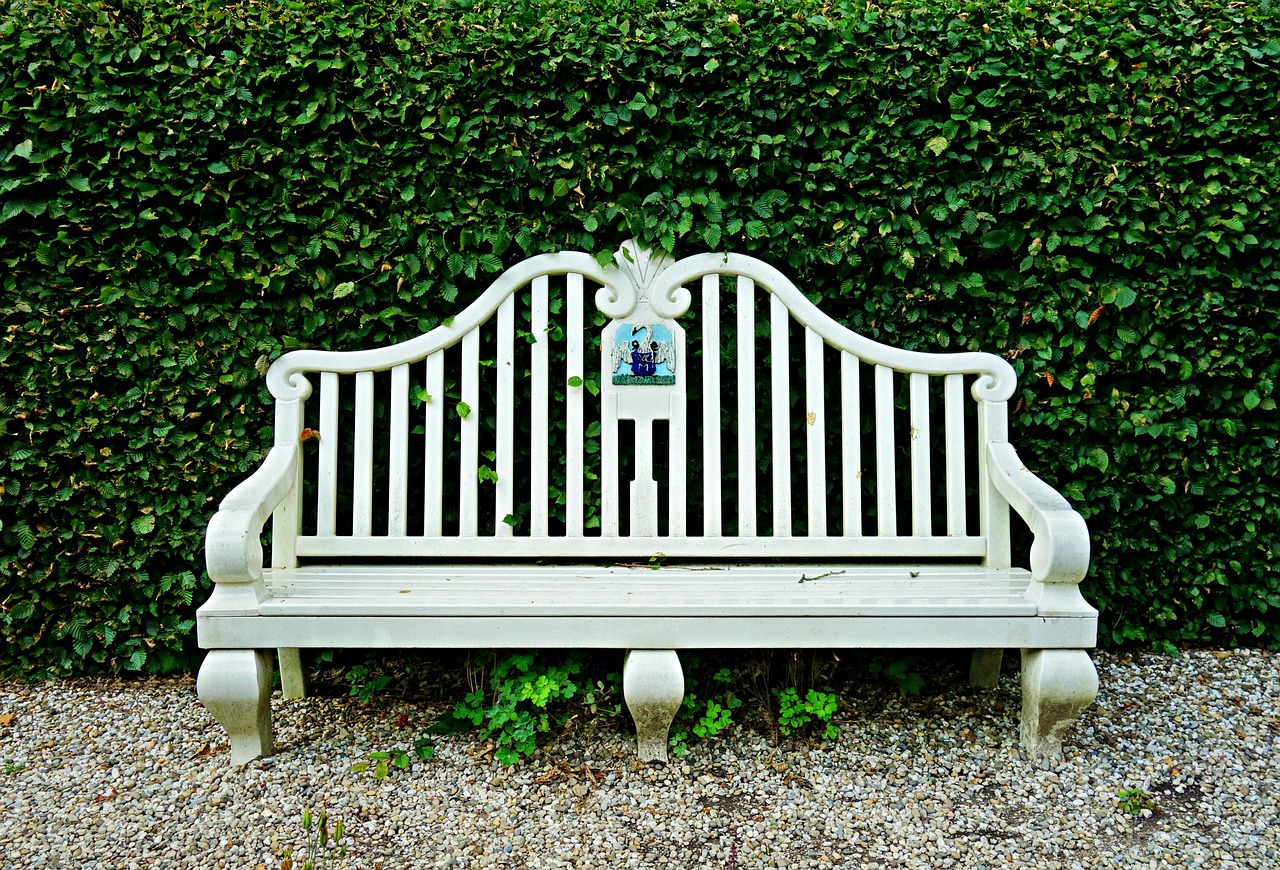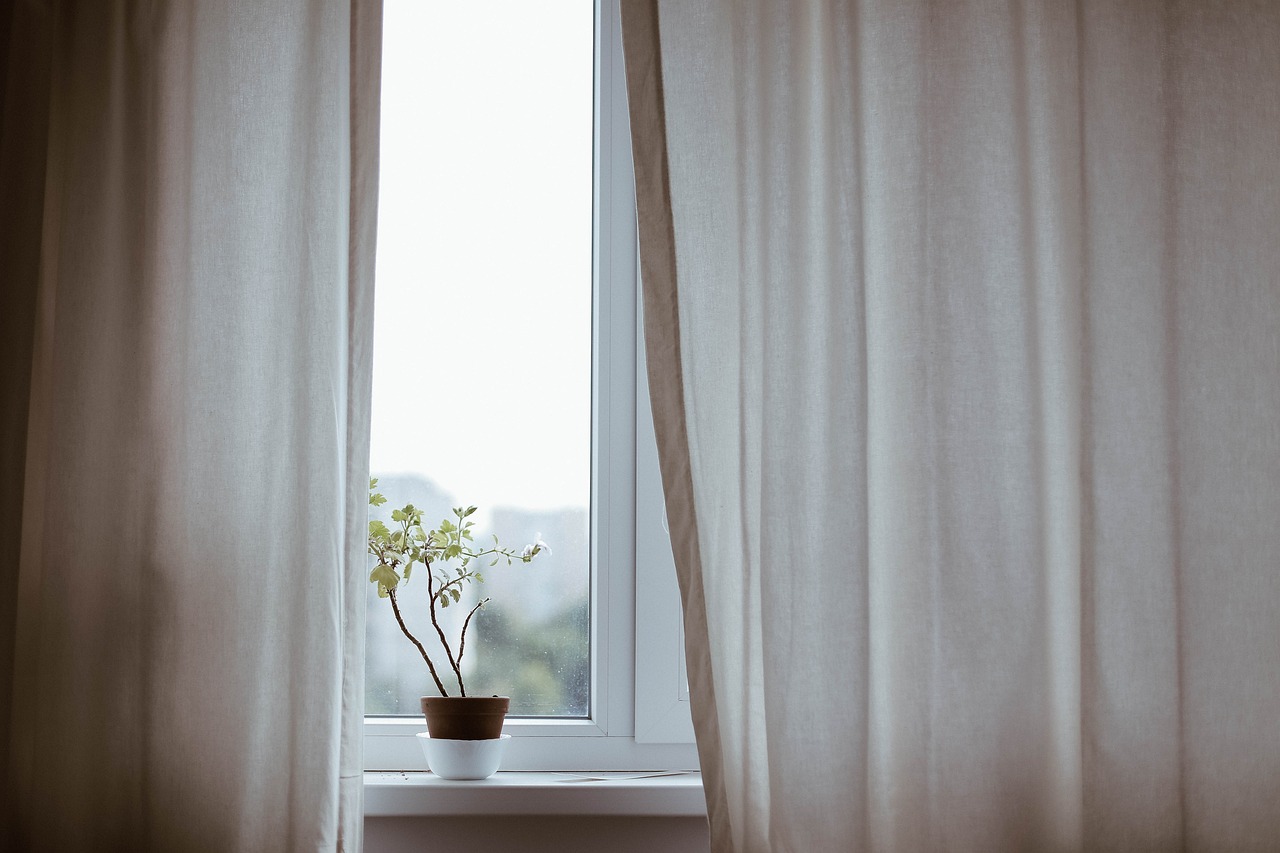How to Create an Eco-Friendly Reading Nook
Creating an eco-friendly reading nook is not just about having a cozy corner to enjoy your favorite books; it's also about making a positive impact on the environment. By incorporating sustainable practices and materials into your reading space, you can contribute to a greener lifestyle while indulging in literary adventures. Let's explore some tips and ideas to help you design a sustainable and environmentally friendly reading nook right in your home.
When it comes to choosing furniture for your eco-friendly reading nook, opt for pieces that are made from recycled materials or sustainably sourced wood. Not only does this reduce the demand for new resources, but it also adds a unique touch to your space. By selecting furniture that aligns with eco-friendly principles, you can create a stylish and conscious reading environment.
Lighting plays a crucial role in setting the ambiance of your reading nook. Consider using energy-efficient options such as LED bulbs or maximizing natural lighting sources to minimize energy consumption. Not only will this choice lower your carbon footprint, but it will also create a bright and inviting atmosphere for your reading sessions.
Organic fabrics are a fantastic choice for cushions, throws, and upholstery in your reading nook. Materials like cotton or linen, when organically sourced, are not only gentle on the environment but also provide a natural and breathable feel to your space. Embrace the comfort and sustainability that organic fabrics offer in your eco-friendly reading nook.
Bringing in plants is a wonderful way to enhance the eco-friendliness of your reading nook. Not only do indoor plants improve air quality by absorbing toxins, but they also add a touch of nature to your space, creating a serene and calming atmosphere. Embrace the greenery and freshness that plants bring to your sustainable reading corner.
Upcycling and repurposing old items can add character and charm to your eco-friendly reading nook. Consider refurbishing old furniture or transforming unused items into functional pieces for your space. By giving new life to old objects, you not only reduce waste but also infuse creativity and sustainability into your reading area.
DIY recycled decor adds a personal and eco-conscious touch to your reading nook. Get creative with materials like glass jars, old books, or reclaimed wood to craft unique decorations that reflect your commitment to sustainability. Infuse your space with handmade elements that showcase your dedication to green living.
Choosing non-toxic paints for your reading nook is essential for maintaining indoor air quality. Opt for paints with low or no volatile organic compounds (VOCs) to ensure that your space remains free from harmful chemicals. By prioritizing non-toxic paints, you can create a healthy and eco-friendly environment for your reading retreat.
Setting up a recycling station within your reading nook encourages sustainable practices and waste reduction. Designate an area for recycling paper, glass, and other materials to promote eco-conscious habits while enjoying your favorite books. By incorporating a recycling station, you can actively contribute to a greener lifestyle within your reading space.

Choose Sustainable Furniture
Tips and ideas on designing a sustainable and environmentally friendly reading space in your home.
When creating an eco-friendly reading nook, one of the key elements to consider is the furniture you choose. Opting for sustainable furniture not only reduces your environmental impact but also adds a unique touch to your reading space. Selecting furniture made from recycled materials or sustainably sourced wood can significantly contribute to creating a green and stylish reading nook.
By choosing sustainable furniture, you are supporting the use of materials that have been repurposed or sourced responsibly, minimizing the need for new resources. This not only helps in reducing waste but also promotes a more eco-conscious lifestyle. Additionally, sustainable furniture often boasts high-quality craftsmanship, ensuring durability and longevity in your reading nook.
Consider pieces made from reclaimed wood, bamboo, or recycled metal for a unique and environmentally friendly touch. These materials not only add character to your reading nook but also showcase your commitment to sustainability. Embrace the beauty of imperfections in recycled materials, as they tell a story of renewal and eco-awareness.
Furthermore, opting for sustainable furniture allows you to align your values with your home decor choices. It reflects a conscious effort to support ethical practices in the furniture industry and encourages others to make environmentally responsible decisions. Transform your reading nook into a sanctuary that not only nurtures your mind but also respects the planet.
If you have any questions or concerns regarding creating an eco-friendly reading nook, check out the following FAQs for more insights:
- How can I ensure the furniture I choose is truly sustainable?
- What are some other eco-friendly decor options for my reading nook?
- Is it expensive to design an environmentally friendly reading space?
- How can I maintain the sustainability of my reading nook in the long run?

Use Energy-Efficient Lighting
When it comes to creating an eco-friendly reading nook, one essential aspect to consider is the lighting you choose. Opting for energy-efficient lighting not only reduces your carbon footprint but also helps in cutting down on energy costs. By selecting the right lighting options, you can illuminate your reading space while being environmentally conscious.
LED bulbs are a fantastic choice for energy-efficient lighting in your reading nook. These bulbs consume significantly less energy than traditional incandescent bulbs, making them a sustainable option for lighting up your space. Not only do LED bulbs last longer, but they also emit less heat, helping to keep your reading nook cool and comfortable.
Natural lighting is another excellent way to brighten up your reading area while saving energy. Positioning your reading nook near a window or skylight allows you to make the most of natural sunlight during the day. Not only does natural light create a warm and inviting atmosphere, but it also helps reduce the need for artificial lighting, further decreasing energy consumption.
Consider installing dimmer switches for your lighting fixtures to adjust the brightness levels based on your reading preferences. This not only adds versatility to your reading nook but also enables you to optimize energy usage by dimming the lights when not needed at full brightness.
Additionally, incorporating smart lighting systems that can be controlled remotely or programmed to turn on and off at specific times can further enhance the energy efficiency of your reading nook. These systems allow you to manage your lighting usage effectively, ensuring that lights are only on when required, thus conserving energy.

Opt for Organic Fabrics
When creating an eco-friendly reading nook, one essential aspect to consider is the choice of fabrics used in the space. Opting for organic fabrics can significantly contribute to the sustainability and environmental friendliness of your reading area. Organic fabrics, such as cotton or linen, are produced without the use of harmful chemicals or pesticides, making them a healthier and greener option for your reading nook.
Organic fabrics not only benefit the environment but also provide a cozy and comfortable feel to your reading space. These fabrics are soft to the touch and breathable, ensuring a pleasant reading experience while aligning with your eco-conscious lifestyle. By choosing organic fabrics for cushions, throws, and upholstery in your reading nook, you can create a space that promotes both relaxation and sustainability.
Additionally, organic fabrics are durable and long-lasting, reducing the need for frequent replacements and contributing to waste reduction. Investing in high-quality organic materials for your reading nook not only supports sustainable practices but also adds a touch of natural beauty to the space. Imagine sinking into a plush organic cotton cushion while enjoying your favorite book, surrounded by the gentle textures and earthy tones of organic fabrics.
Furthermore, organic fabrics come in a variety of designs and patterns, allowing you to personalize your reading nook according to your style preferences. Whether you prefer a minimalist aesthetic or a bohemian flair, there are organic fabric options to suit every taste. By incorporating organic fabrics into your reading nook, you can create a harmonious and environmentally conscious space that reflects your values and commitment to sustainability.

Bring in Plants
Bringing plants into your reading nook can significantly enhance the ambiance and air quality of the space. Imagine lush greenery gently swaying as you immerse yourself in a captivating book, creating a serene and refreshing atmosphere akin to a tranquil garden oasis indoors. Plants not only add a touch of nature but also purify the air by absorbing carbon dioxide and releasing oxygen, promoting a healthier environment for reading and relaxation.
Consider incorporating a variety of plants in your reading nook, ranging from small succulents like aloe vera or snake plants to larger leafy greens such as peace lilies or pothos. Each plant brings its unique charm and benefits, from adding a pop of color to improving humidity levels. You can place them on shelves, window sills, or hanging planters to maximize space and create a visually appealing green corner that invigorates your reading experience.
Furthermore, caring for indoor plants can be a therapeutic and rewarding experience, allowing you to nurture and watch them flourish in your eco-friendly reading space. Watering, pruning, and tending to your plant companions can become a mindful practice that complements the tranquility of reading, fostering a deeper connection with nature within the confines of your home.

Upcycle and Repurpose
When it comes to creating an eco-friendly reading nook, one of the most creative and sustainable approaches is to upcycle and repurpose old items. By giving a new life to pre-loved furniture or repurposing unused items, you can add a unique touch to your reading space while reducing waste and promoting sustainability.
Imagine transforming an old wooden crate into a stylish bookshelf or repurposing vintage suitcases as quirky storage solutions for your reading nook. These upcycled pieces not only add character to your space but also contribute to the preservation of the environment by diverting items from landfills.
Upcycling allows you to unleash your creativity and showcase your DIY skills by turning discarded objects into functional and aesthetically pleasing elements for your reading area. Whether it's refurbishing an old chair with a fresh coat of paint or repurposing mason jars into charming candle holders, the possibilities are endless when you embrace the art of upcycling.
Moreover, upcycling and repurposing align perfectly with the principles of sustainability by promoting resourcefulness and reducing the demand for new products. By giving old items a new purpose in your reading nook, you not only contribute to the circular economy but also create a space that reflects your unique style and commitment to environmental consciousness.

DIY Recycled Decor
Are you looking to add a personal touch to your eco-friendly reading nook? Why not try your hand at ? This creative and sustainable approach involves crafting decorations using recycled materials to enhance the green vibe of your reading space.
Imagine transforming old glass jars into charming candle holders or creating a unique bookshelf from reclaimed wood. By repurposing items that would have otherwise been discarded, you not only add character to your reading nook but also contribute to reducing waste and promoting sustainability.
One fun idea is to upcycle old books into decorative pieces. You can stack them creatively to form a side table or even turn them into a lamp base. This not only gives a new life to old books but also adds a literary charm to your reading corner.
Another great DIY project is to repurpose glass jars into stylish storage containers. By decorating them with eco-friendly paints or wrapping them in natural fibers, you can create functional and visually appealing organizers for your pens, bookmarks, or small trinkets.
For a touch of nature indoors, consider crafting planters from recycled materials. Old tin cans, wooden crates, or even plastic bottles can be transformed into unique plant pots, adding a refreshing green element to your reading nook.
Get creative with your DIY Recycled Decor projects and let your imagination run wild. Not only will you personalize your eco-friendly reading space, but you will also take pride in knowing that you have contributed to a more sustainable lifestyle through your creative endeavors.

Choose Non-Toxic Paints
When creating an eco-friendly reading nook, one crucial aspect to consider is the choice of non-toxic paints for your space. Opting for paints with low or no volatile organic compounds (VOCs) is essential in maintaining a healthy environment in your reading area. VOCs are harmful chemicals that can off-gas into the air, contributing to indoor air pollution and potential health risks.
By selecting non-toxic paints, you not only safeguard your health but also contribute to a more sustainable living space. These paints are typically water-based and free from harmful chemicals, making them a safer and eco-friendly choice for your reading nook. Additionally, non-toxic paints are often low odor, ensuring a pleasant and comfortable reading environment without the overpowering smell of traditional paints.
When shopping for non-toxic paints, look for labels that indicate low or zero VOC content. Brands that specialize in eco-friendly paints offer a wide range of colors and finishes to suit your design preferences while prioritizing environmental and health considerations. These paints are not only better for your well-being but also for the planet, as they reduce the release of harmful substances into the atmosphere.
Moreover, choosing non-toxic paints aligns with the overall theme of sustainability in your reading nook. It complements the use of organic fabrics, energy-efficient lighting, and recycled materials, creating a harmonious and environmentally conscious space where every element contributes to a greener lifestyle. By incorporating non-toxic paints into your design choices, you demonstrate a commitment to both personal well-being and environmental responsibility.

Create a Recycling Station
Creating a recycling station in your eco-friendly reading nook is a fantastic way to promote sustainability and reduce waste. By designating a specific area for recycling paper, glass, and other materials, you not only keep your reading space organized but also contribute to environmental conservation. Imagine having a corner in your cozy nook dedicated to bins for different types of recyclables, making it easy and convenient for you to sort and dispose of items responsibly.
One creative idea for your recycling station is to repurpose old containers or baskets to hold recyclable materials. You can label each container with the type of waste it's meant for, such as paper, plastic, or glass, to make sorting effortless. This not only adds a touch of organization to your reading nook but also serves as a visual reminder of your commitment to sustainability.
Consider incorporating a small tabletop recycling bin next to your reading chair for convenience. This way, you can easily dispose of paper scraps, used envelopes, or empty cans without having to leave your cozy reading spot. A stylish and functional recycling bin can seamlessly blend into your reading nook's decor while promoting eco-conscious habits.
Additionally, you can personalize your recycling station with DIY recycling signage or decorative elements made from recycled materials. Get creative and craft unique labels or signs using old cardboard, paint, or sustainable materials to add a personal touch to your eco-friendly reading nook. Not only does this enhance the visual appeal of your recycling station, but it also reinforces the importance of recycling in a fun and engaging way.
Frequently Asked Questions
- What are the benefits of creating an eco-friendly reading nook?
Designing an eco-friendly reading nook not only helps to reduce your carbon footprint but also promotes a healthier living environment. By using sustainable materials and practices, you contribute to conservation efforts and support a greener future for all.
- How can I incorporate sustainable furniture into my reading nook?
You can choose furniture made from recycled materials, reclaimed wood, or sustainably sourced resources. Look for certifications like FSC (Forest Stewardship Council) to ensure the furniture meets eco-friendly standards.
- What are some energy-efficient lighting options for a green reading space?
Opt for LED bulbs, which consume less energy and last longer than traditional incandescent bulbs. Natural lighting through windows or skylights is also a great way to reduce electricity usage during the day.
- How can indoor plants enhance the eco-friendliness of my reading nook?
Plants not only add a touch of nature to your space but also help purify the air by absorbing toxins and releasing oxygen. They contribute to a healthier indoor environment and create a calming atmosphere for reading.
- Why is it important to use non-toxic paints in a sustainable reading nook?
Traditional paints contain volatile organic compounds (VOCs) that release harmful chemicals into the air. By choosing non-toxic paints with low or no VOCs, you maintain air quality and reduce indoor pollution in your reading nook.



















